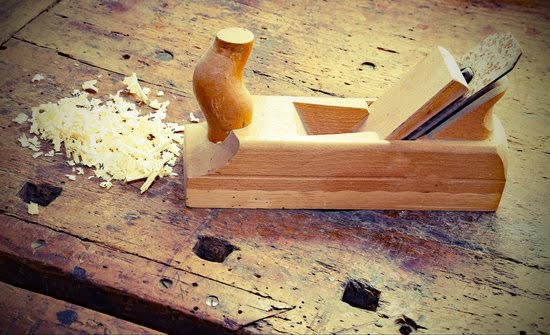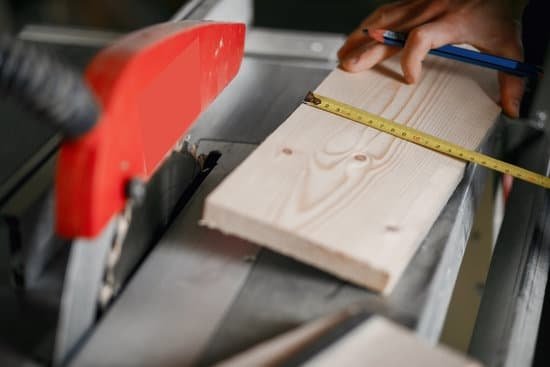When setting up a woodworking shop, one of the most crucial aspects to consider is the amount of space needed for the shop to function efficiently and effectively. Determining the right amount of square footage for a woodworking shop can be a challenging task, as it depends on various factors such as the size of projects, equipment needs, and budget constraints.
In this article, we will explore the importance of space in a woodworking shop and provide guidance on how to determine the ideal square footage based on specific needs.
Space is a critical factor in any woodworking shop, as it directly impacts productivity, safety, and overall workflow. Whether you are a hobbyist woodworker or a professional carpenter, having adequate space is essential for maneuvering around large pieces of wood, operating machinery safely, and storing materials and tools efficiently. Understanding the significance of having the right amount of space in a woodworking shop is key to creating an environment that fosters creativity and craftsmanship.
In this guide, we will delve into various factors that should be considered when determining the square footage for a woodworking shop. From minimum space requirements for small woodworking shops to layout and design considerations for maximizing space utilization, we will cover all aspects that influence the spatial needs of a woodworking workshop.
Whether your workshop is a dedicated space solely for woodworking or serves multiple purposes, we will provide valuable insights on finding the right square footage to meet your specific needs.
Factors to Consider When Determining Square Footage for a Woodworking Shop
When setting up a woodworking shop, one of the most important considerations is determining the right amount of square footage needed for the space. Several factors must be taken into account to ensure that the shop is functional, safe, and efficient for woodworking activities.
Types of Woodworking Projects
The type and scale of woodworking projects that will be undertaken in the shop should be a primary consideration when determining square footage. For small-scale projects such as crafting smaller furniture pieces or creating small decorative items, a smaller space may suffice. However, larger projects such as building cabinets or larger furniture items will require more room to accommodate the materials and tools necessary.
Equipment and Tool Requirements
It is crucial to take stock of the equipment and tools that will be used in the woodworking shop. Large stationary tools such as table saws, jointers, planers, and bandsaws will require adequate space for operation and safety clearance. Additionally, ample space must be considered for storage of hand tools, lumber stockpiles, and workbenches.
Workflow Efficiency
Consideration should also be given to the flow of work within the woodworking shop. Adequate space should be allotted for material preparation, assembly, finishing, and storage. A cramped workspace can lead to inefficiency and safety hazards due to inadequate maneuvering room.
By carefully considering these factors when determining square footage for a woodworking shop, woodworkers can ensure that their workspace is well-suited to their needs while promoting productivity and safety.
Minimum Square Footage Requirements for a Small Woodworking Shop
When starting a small woodworking shop, it’s essential to determine the minimum square footage needed to effectively operate and carry out woodworking projects. There are several factors to consider when determining the ideal square footage for a small woodworking shop.
Equipment and Tools
One of the primary considerations when determining the minimum square footage for a small woodworking shop is the equipment and tools that will be used. For instance, if you plan on having large stationary machines such as table saws, band saws, and jointers, you will need to allocate enough space for these machines, as well as space for material storage and workbenches.
Workflow and Movement
Another factor to consider is the workflow and movement within the workshop. It’s important to have enough space to move around comfortably while working on projects. This includes having space for maneuvering large pieces of wood or materials, as well as ensuring there is ample room between workstations to avoid congestion.
Storage
In addition to workspace for tools and equipment, adequate storage is crucial in a small woodworking shop. Proper storage solutions can help maximize the available square footage by keeping the workshop organized and free from clutter. Whether it’s storing lumber, hand tools, or supplies, having designated storage areas can make a significant difference in utilizing space efficiently.
Considering these factors when planning the minimum square footage requirements for a small woodworking shop can help create a functional and efficient workspace that meets your needs while taking into account what sq ft for a woodworking shop.
Ideal Square Footage for a Mid-Size Woodworking Shop
When it comes to setting up a mid-size woodworking shop, determining the ideal square footage is crucial for ensuring an efficient and functional workspace. Here are some factors to consider when deciding the right amount of space for a mid-size woodworking shop:
1. Equipment and machinery: Make a list of all the equipment, such as table saws, planers, jointers, and dust collection systems, that you plan to have in your woodworking shop. Consider the space needed for each one, including clearance around the machines for safety and accessibility.
2. Workstations and assembly areas: Think about how much space you will need for workbenches, assembly tables, and other workstations. This will depend on the size of the projects you typically work on and how many people will be using the space at once.
3. Storage: Adequate storage is essential in a woodworking shop to keep tools, materials, and finished products organized. Factor in space for cabinets, shelving units, and lumber racks when determining the overall square footage needed.
Considering these factors can help you determine an appropriate square footage for your mid-size woodworking shop. The ideal size will allow you to work comfortably without feeling cramped or restricted by limited space.
To optimize your mid-size woodworking shop’s layout, consider these tips:
With thoughtful planning and organization strategies, you can make the most of your mid-size woodworking shop’s square footage while creating a productive and enjoyable workspace.
Maximum Square Footage for a Large-Scale Woodworking Shop
When it comes to large-scale woodworking shops, the square footage requirements can vary depending on the specific needs of the woodworker. In general, a large-scale woodworking shop will require a significant amount of space in order to accommodate larger equipment, multiple workstations, and ample storage for materials and finished products.
The ideal square footage for a large-scale woodworking shop is typically between 800 to 1,500 square feet. This range allows for plenty of room to set up different work areas, such as cutting, sanding, assembly, and finishing stations. Additionally, it provides ample space for larger tools and machinery such as table saws, planers, jointers, and dust collection systems.
One important factor to consider when determining the square footage for a large-scale woodworking shop is workflow efficiency. A layout that allows for easy movement between workstations and storage areas can help optimize productivity. It’s also essential to have enough space to maneuver larger pieces of wood or furniture throughout the shop without feeling cramped or restricted.
| Ideal Square Footage Range | 800 – 1,500 Sq Ft |
|---|---|
| Main Equipment | Table saws, planers, jointers |
| Additional Considerations | Workflow efficiency and maneuverability of large items |
Layout and Design Considerations for Maximizing Space in a Woodworking Shop
When designing a woodworking shop, it is crucial to consider the layout and design to maximize the use of the available space. Whether you are working with a small, mid-size, or large-scale woodworking shop, efficient use of space can improve productivity and create a safer working environment.
One of the key considerations for maximizing space in a woodworking shop is to have a well-thought-out floor plan. This includes positioning workstations, machinery, and tool storage in a way that minimizes wasted space and allows for smooth workflow. Additionally, utilizing vertical space through the use of wall-mounted storage cabinets and overhead racks can free up valuable floor space.
Another important aspect to consider is the organization and accessibility of tools and materials. A well-organized shop not only maximizes space but also saves time by reducing the need to search for tools or supplies. Implementing storage solutions such as pegboards, drawer organizers, and tool carts can help keep the workspace tidy and efficient.
Furthermore, when planning the layout of a woodworking shop, it is essential to leave sufficient room for maneuvering around equipment and work areas. Adequate clearance between machinery, workbenches, and storage units is important for safety as well as ease of movement while working on projects.
| Consideration | Recommendation |
|---|---|
| Well-thought-out floor plan | Position workstations, machinery, and tool storage efficiently |
| Organization of tools and materials | Implement storage solutions such as pegboards and drawer organizers |
| Adequate clearance | Leave enough room for maneuvering around equipment |
Additional Considerations for a Multi-Purpose Woodworking Shop
When creating a woodworking shop that serves multiple purposes, it’s essential to carefully consider the square footage needed to accommodate all activities while still allowing for efficient workflow. In addition to the factors already discussed, there are specific considerations for a multi-purpose woodworking shop that will influence the required square footage.
Here are some important factors to consider when determining the square footage for a multi-purpose woodworking shop:
1. Types of Activities: Consider all the different types of activities that will take place in the woodworking shop. Will there be space for traditional woodworking, CNC machining, finishing, assembly, or other specialized tasks? Each activity will require its own designated area within the shop.
2. Storage Needs: A multi-purpose woodworking shop may require additional storage space for materials, tools, and equipment related to each type of activity. Adequate storage is crucial for maintaining an organized and efficient workspace.
3. Traffic Flow: With multiple activities occurring in the same space, it’s important to plan for accessible and safe traffic flow. This includes considering the layout of machinery, workbenches, and storage areas to minimize congestion and potential safety hazards.
By carefully evaluating these factors and taking them into account when determining square footage requirements, woodworkers can create a multi-purpose woodworking shop that effectively supports all intended activities while promoting productivity and safety.
As you plan your multi-purpose woodworking shop, it’s important to assess your specific needs and consider how they will impact your square footage requirements. By accounting for all activities, storage needs, and traffic flow considerations, you can ensure that your woodworking shop provides ample space for diverse functions without compromising efficiency or safety.
Tips for Optimizing Space in a Small Woodworking Shop
When it comes to setting up a small woodworking shop, optimizing space is crucial for creating a functional and efficient workspace. In order to make the most out of limited square footage, woodworkers need to carefully consider their layout and design choices.
One important tip for optimizing space in a small woodworking shop is to make use of vertical storage solutions. Utilizing wall-mounted shelves, pegboards, and hanging racks can free up valuable floor space while keeping tools and materials easily accessible. Additionally, investing in stackable storage containers or cabinets can help maximize storage capacity without taking up too much room.
Another strategy for making the most out of a small woodworking shop is to prioritize versatile equipment and tools. Look for multi-functional workbenches, compact table saws, and portable tool stands that can be easily stored away when not in use. This will help minimize clutter and create a more flexible workspace.
In addition to strategic storage solutions and versatile equipment, woodworkers should also aim for an organized and clutter-free environment. Implementing a system for keeping the workspace tidy, such as regular decluttering sessions and designated storage areas for different types of materials, can go a long way in maximizing efficiency within a small woodworking shop. By utilizing these tips for optimizing space, woodworkers can create a productive and functional workspace even with limited square footage.
By following these tips for optimizing space in a small woodworking shop, woodworkers can create an efficient and functional workspace even within limited square footage. From utilizing vertical storage solutions to prioritizing versatile equipment, there are numerous strategies that can be implemented to make the most out of a small woodworking shop.
Creating an organized and clutter-free environment is key to maximizing efficiency within limited space as well. With these tips in mind, woodworkers can set up an effective small woodworking shop that meets their needs despite the constraints of square footage requirements.
Conclusion
In conclusion, determining the right square footage for your woodworking shop is crucial for its functionality and productivity. Whether you are setting up a small, mid-size, or large-scale woodworking shop, there are several factors to consider when it comes to space requirements. It’s important to take into account the type of woodworking projects you will be working on, the tools and machinery you will need, as well as any additional functions your shop will serve.
When deciding on the square footage for your woodworking shop, it’s essential to consider layout and design considerations that can help maximize space. This includes efficient storage solutions, clear pathways for movement, and ensuring that workstations are strategically placed for optimal workflow. Additionally, if you are planning a multi-purpose woodworking shop, such as combining it with a garage or hobby area, careful planning will be required to make the most out of limited space.
Lastly, regardless of the size of your woodworking shop, there are tips and techniques you can implement to optimize space. By utilizing vertical storage options, organizing tools and materials efficiently, and keeping work areas clutter-free, you can create a more functional and productive workspace. Finding the right square footage for your woodworking shop may require some thoughtful planning and consideration of various factors but doing so will ultimately contribute to a successful and enjoyable woodworking experience.
Frequently Asked Questions
What Is the Ideal Size for a Woodworking Shop?
The ideal size for a woodworking shop depends on the individual needs of the woodworker. Factors to consider include the types of projects being undertaken, the amount of equipment needed, and space for storage and movement.
How Small Can a Woodshop Be?
A woodshop can be as small as a corner in a garage or spare room, depending on the scale of projects being worked on. Even in a small space, organization and efficient use of available area are crucial.
How Big to Build a Shop?
The size to build a woodworking shop will depend on several factors such as budget, available space, and long-term goals. It’s important to plan for future expansion if necessary and to prioritize functionality and safety in the design.

Hi everyone! I’m a woodworker and blogger, and this is my woodworking blog. In my blog, I share tips and tricks for woodworkers of all skill levels, as well as project ideas that you can try yourself.





